Companies today are always looking for methods to improve productivity and decrease expenses when operating. A big chance for better performance lies in improving procurement management. Typically, the manual steps, long waiting for approvals, and little view into spending are all parts of traditional purchasing. Procuring procurement software can change the way a business buys goods and help increase value throughout the organisation. Because of digitising procurement processes, companies can make better decisions, build better connections with suppliers, and expect big cost savings.
Removing Paperwork and Time-Wasting
Traditional approaches to procurement are mostly done by hand, leading to clogged steps and inefficiency throughout the process. Through procurement software, you can digitise the entire job of purchasing so these practices are no longer needed. All steps from putting in the request to giving final approval are done online without the need for paper documents and with much less processing time.
Reducing lost documents and keeping all procurement actions on record is made possible by digital transformation. With this approach in place, buying and selling activities become more predictable and efficient for all concerned.
Reducing the Steps in Approval Workflows
Many approval levels in the company usually lead to delayed purchasing and annoyance among those who require quick supply. Such software streamlines these processes by setting rules for routing approvals to the people who have to agree before anything is purchased. With this automation, all purchases get approved by the right people within the appropriate time.
Because of the simple workflows, the app allows both requesters and approvers to see if an application has been approved and understand why it might be taking extra time. With better visibility, both stakeholders and management can anticipate better and experience a more content procurement process.
Real-Time Spending Visibility
The main benefit of using procurement software is that users can immediately track and review their company’s spending habits. Managers can check dashboards that update with each new transaction, allowing them to watch payments, use of the budget and changes in spending everywhere. Because the budget data is now more easily available, firms can take steps to avoid overspending before spending gets out of hand.
With these advanced reporting tools, businesses can plan their next steps using what has happened in the past and what can be expected in the future. With information, organisations can haggle for better contracts, discover where they can save money and know what to buy moving forward.
Science has Developed Automatic Budget Control
The system comes with financial controls that block unauthorized spending and support following company policies. Such systems refuse to process orders that go over budget or need another sign-off for purchases above a set amount. The use of automated enforcement allows organisations to stick to their financial discipline.
With the software, administrators are informed before departments reach their spending limits, so they can watch their budgets closely and maintain good business operations.
All Vendor Details Together in One Place
You need to handle suppliers effectively to achieve success in procurement, and procurement software makes it possible to manage all your vendor-related data in one location. Full supplier profiles can be created and stored by organisations that include contact points, statistics on their work, contract details and a record of conversations. Thanks to centralisation, it becomes smoother to assess suppliers and decide which vendor to use.
Working with a centralised system encourages better conversations with vendors and leads to beneficial collaborations for all. If the procurement team can access information on their suppliers easily, they are able to address all questions and concerns faster.
Keeping an Eye on Performance and Evaluation
Assessing suppliers regularly allows us to provide high-quality service and keep prices low. With P2P software, companies can monitor how goods are being delivered and how they are rated for quality and compliance with the terms of their contracts. Doing this lets you spot highly efficient vendors and handle any problems with those whose results are low.
The performance data also supports contract negotiations and renewal decisions, ensuring that organisations work with suppliers who consistently meet their expectations and provide good value for money.
Advanced Analytics and Reporting
P2P software provides sophisticated analytics capabilities that help organisations optimise their procurement strategies. Advanced reporting tools can identify spending patterns, highlight cost-saving opportunities, and track compliance with procurement policies. These insights enable data-driven decision-making that leads to better outcomes and improved performance.
The analytics also support continuous improvement initiatives by providing metrics that help organisations measure the effectiveness of their procurement processes and identify areas for enhancement.
Automated Policy Enforcement
Procurement software assists businesses in ensuring compliance with internal policy and external laws by enforcing policy throughout the buying process. The system is able to automatically enforce approval requirements, expense limits, and vendor selection criteria per predetermined rules. Automation minimises the risk of policy violations and enforces consistent use of procurement policy.
The automated enforcement also leaves audit trails that record compliance activity and evidence of effective oversight. The documentation is useful for internal audits and regulatory examinations.
Risk Mitigation Strategies
Successful risk management is necessary to secure organisations against supply chain interruption and loss of money. Procurement software contains tools that identify and reduce different kinds of procurement risks. The software can track supplier financial health, monitor compliance with contracts, and notify users about issues before they become major issues.
Risk management features also enable business continuity planning by assisting companies to diversify their supplier base and create contingency plans for high-priority buys.
Conclusion
Procurement software implementation is a strategic investment that can revolutionise the way organisations execute their purchasing processes. Ranging from the elimination of manual processes and enhanced cost control to enhanced supplier relationships and compliance, these solutions provide end-to-end value that touches all aspects of procurement processes. The sophisticated features of today’s P2P software supply the tools to refine procurement processes and gain measurable gains in efficiency and cost reduction. Companies that implement these technology solutions set themselves up for long-term prosperity in a more and more competitive market. The secret to achieving maximum benefit depends on choosing the appropriate procurement software solution and deploying it with adequate planning, training, and support.

